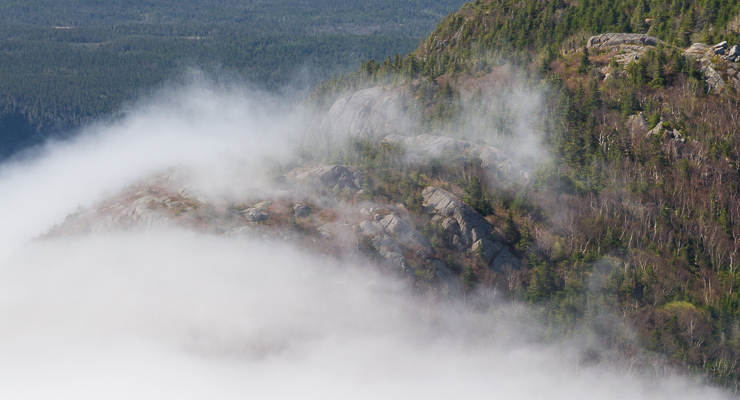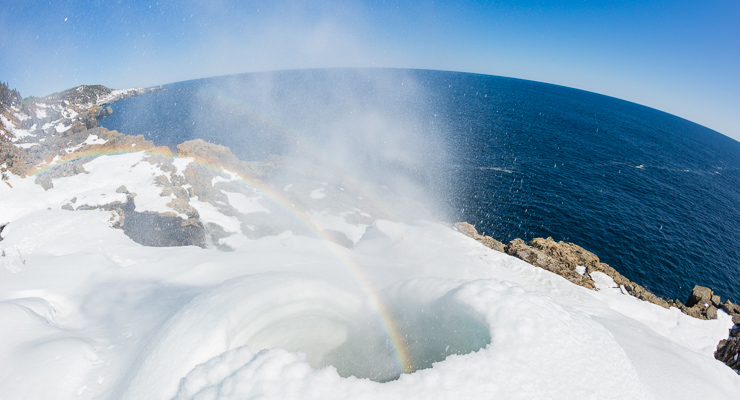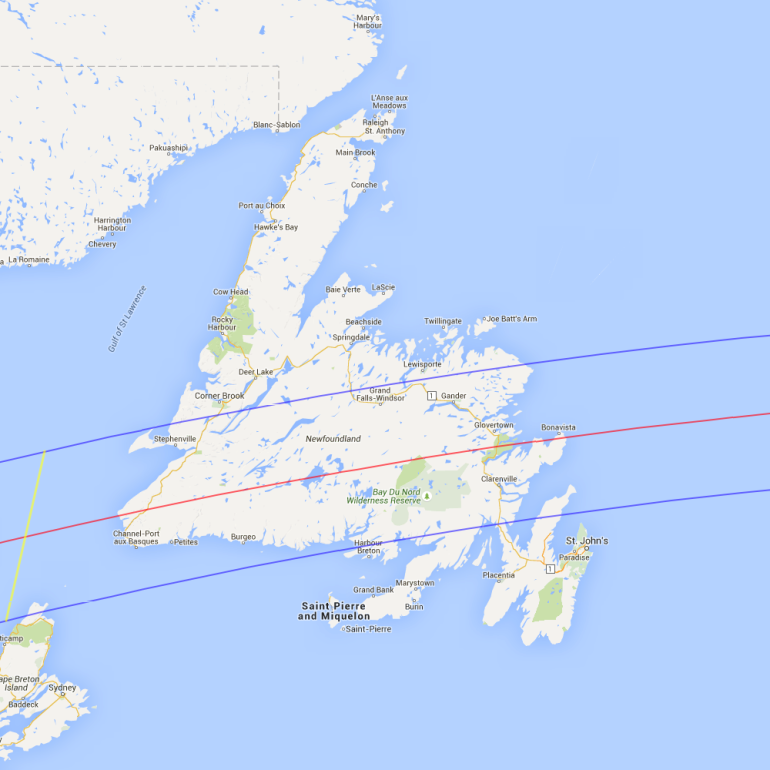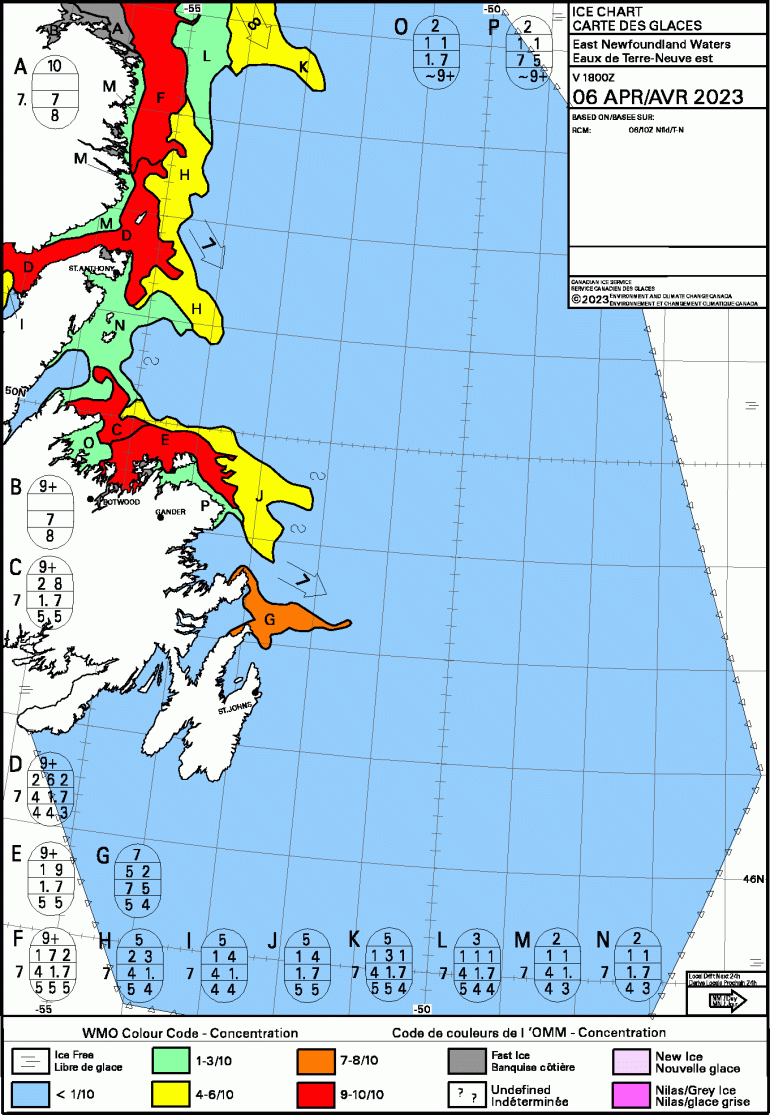On April 8 2024, only ten days away, a Total Eclipse of the Sun will sweep over North America.
On this long-awaited Eclipse Day, the Path of Totality is where you’ll want to be. It stretches all the way over North America, it’s about 170 km wide, so there’s lots of places you can go:
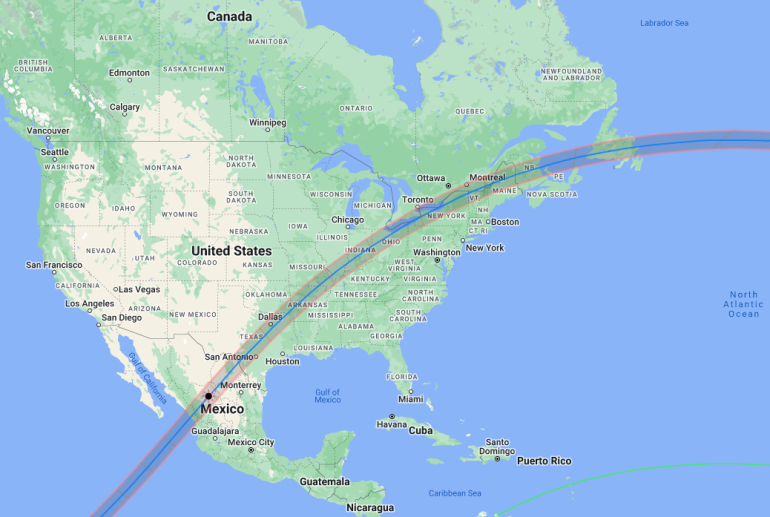
Path of Totality over North America – April 8, 2024
If you haven’t already made plans to see the eclipse, make plans now. I have seen two Total Solar Eclipses in my life and I’m just as excited about this next one. Once you see it too, you’ll understand why.
Not convinced it’s worth the hassle? Let me just share my previous two experiences:
Why you should go
Because a Total Solar Eclipse is the best show on Earth and you’ll remember it forever, especially if you see it with friends and loved ones.
I saw my first Total Solar Eclipse on a whim, way back in 1999, when I was just a lad and still lived in Europe. This eclipse was announced in the newspaper and it included a little map of the Path of Totality. The map showed my hometown in the partial eclipse zone (95%) and you don’t want to see a partial eclipse when a total eclipse (100%) is just a few hours away.
With the news-clipping in hand, my friends and I set off on an impromptu road trip. After some 5 hours driving, along a quiet country road in northern France, we had a good look at the little map and figured we must be in the right place, so we pulled up in a field:
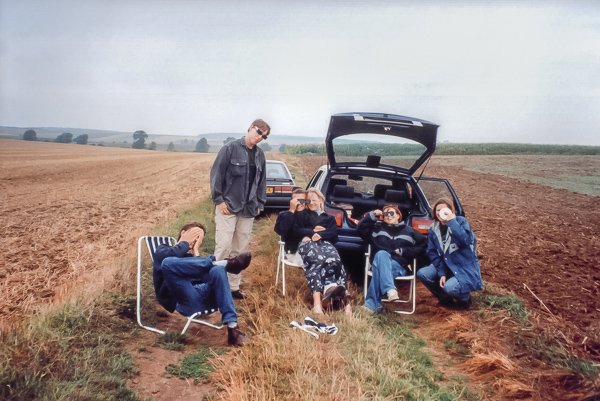
Eclipse newbies in a field – France, 1999
With nothing but clouds overhead we weren’t sure we would get to see anything at all, and eclipse-twilight came upon us while a thick cloud cover was still in the way. Then, to our amazement, a gap in the clouds; we were all stunned before calling out in shock and joy:
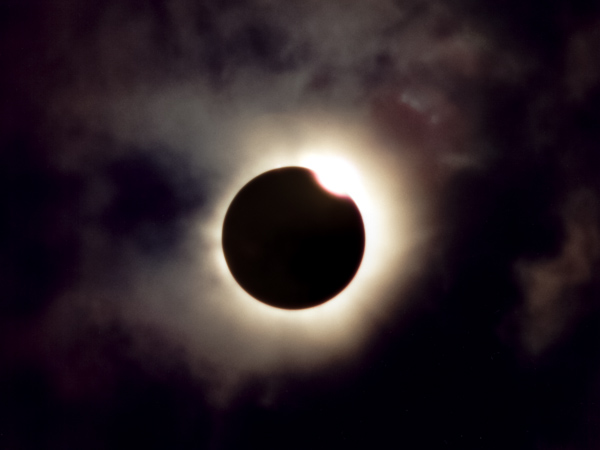
Total Solar Eclipse – Somewhere in France, August 11 1999
It’s hard to describe the profound euphoria of seeing a Total Solar Eclipse in person. Awestruck by the experience, we decided this wouldn’t be our last eclipse, and 7 short years later we travelled to our 2nd eclipse, this time no mere road trip away but a whole vacation away.
For this 2nd eclipse we selected a location with much better weather. Eclipse day was graced with clear blue skies all around, and we had a great vantage point among the ruins of the ancient Graeco-Roman city of Side, in Turkey:

Doing a practice run before Totality – Side, Turkey
Under this cloudless sky we caught the entire show: the slow-moving anticipation-building partial phase of the eclipse, then the adrenaline-high of Baily’s Beads, the Diamond Ring, and the utterly brilliant view of the solar corona with its wispy white streamers flowing along the magnetic field of the sun – rare and beautiful sights – only visible during Totality:

Total Solar Eclipse – Side, Turkey, March 29 2006
Then there was the sound of the eclipse: this amazing view up in the sky was accompanied by ecstatic whooping, whistling, and hollering of the crowds around us when they witnessed it right along with us.
All that said, pictures and descriptions don’t do an eclipse justice, not really, there’s a magic here you have to see for yourself.
Now that you understand why you should go, here’s where and when you should go:
Where and when you should go
Here is a website with a map that shows you where the Path of Totality is exactly and at what time you can expect to have your mind blown by the eclipse:
https://www.timeanddate.com/eclipse/map/2024-april-8
The map is pretty straightforward: find a place to go inside the Path of Totality, then click on it to see the local time of the eclipse and the duration of Totality.
For example, here are two locations along the Path of Totality in Newfoundland, one on each coast. Please note that in both cases I’ve picked locations that have 100.00% obscuration, and I’ve picked locations fairly close to the middle of the path:
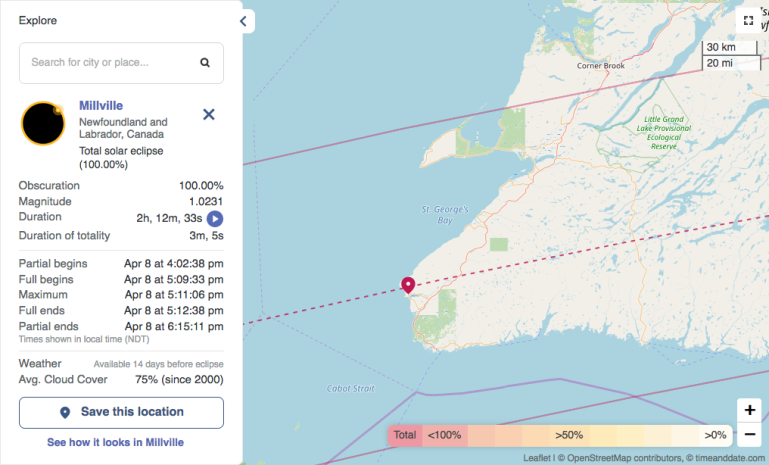
Total Solar Eclipse 2024 – West Coast Timing
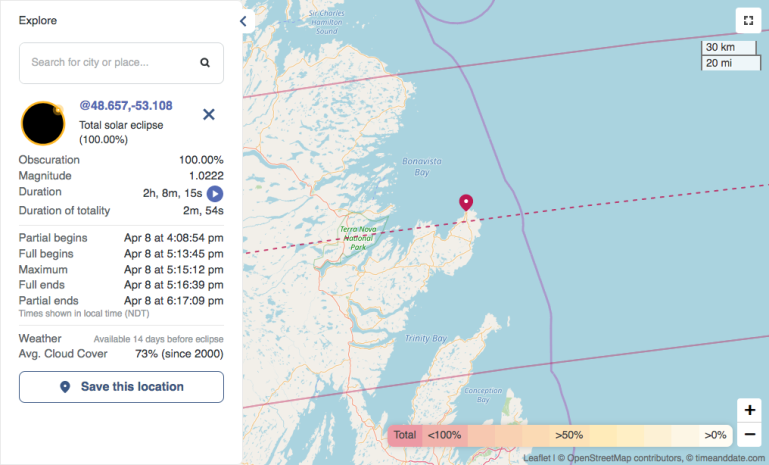
Total Solar Eclipse 2024 – East Coast Timing
On both sides of Newfoundland, the partial phase of the eclipse starts shortly after 4 PM, but that’s just the warm-up act.
The real show is the Total Eclipse of the Sun (on these little maps, that happens between ‘Full begins’ and ‘Full ends’). In the case of Bonavista, Totality starts at 5:13:45 PM, and lasts just 2 minutes and 54 seconds.
The longer you travel west, the longer Totality lasts. Some eclipse enthusiasts may even travel to the mainland, or the US, or even Mexico.
A word of caution
With so much joy and wonder coming our way, is there anything that can go wrong? Two things come to mind: safety and weather.
Regarding eclipse safety: you should never look at the sun directly, and the same is true for the partial phase of the eclipse. You need eclipse glasses for that. Only when the moon covers the sun in its entirety, during those precious few minutes of Totality, can and should you look at the eclipse with the naked eye.
As for the weather, keep checking the forecast as the day approaches so you know what to expect. Even with a poor weather forecast, still go! Leave on time and make a fun road trip out of it, like I did in 1999 under all that cloud cover in France. Seriously, this just may be the best thing you ever do!
